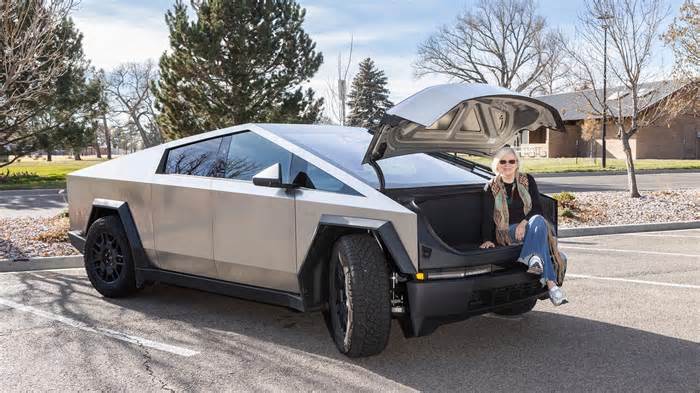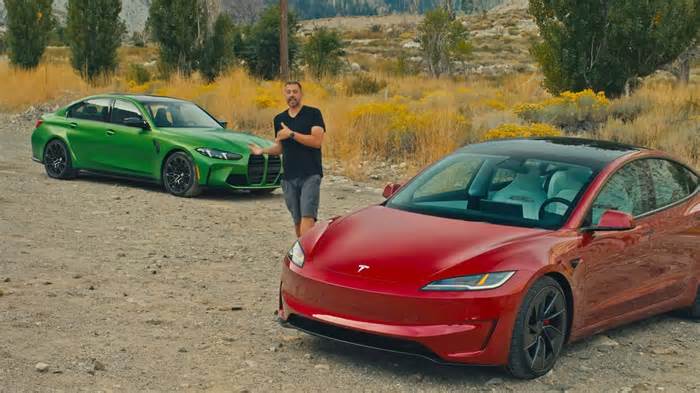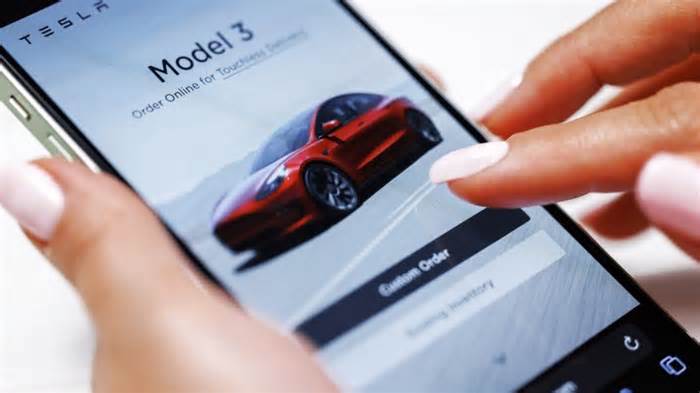
SpaceX Starlink mega-constellation: 'Limited time' to fix brightness issue
- by BBC
- Jan 09, 2020
- 0 Comments
- 0 Likes Flag 0 Of 5

How satellites could revolutionise the internet
The company is experimenting with a new coating that will hopefully reduce the reflectivity of the Starlinks. Of the 60 new satellites sent up on Monday, one in the batch had this corrective paint job.
Detailed coordinates of the spacecraft are also being shared so observations of the sky can be planned to avoid the objects' passing.
"We don't know yet if these mitigations are useful and effective. We tend to work very quickly. We tend to test, learn and iterate," she was reported as saying by the Space News reporter Jeff Foust.
Astronomers at the meeting said it would not be before the end of February - when the "dark satellite" had reached its operational orbit - that a proper assessment could be made of the coating experiment.
Victoria Girgis/Lowell Observatory
On launch, the Starlinks are released in a train that produces streaks in long exposure images
The AAS has put together a committee to investigate the impact of so-called mega-constellations.
It is not just SpaceX which is rolling out a giant network of satellites. Other companies plan to do the same - some to deliver telecommunications services, others to acquire rapid and repeat imagery of the Earth's surface.
Prof Patrick Seitzer, from the University of Michigan, Ann Arbor, said everybody had been surprised at the brightness of the Starlinks - including SpaceX.
He listed the difficulties posed to astronomy by their current reflectivity. The Michigan astronomer described how they produced multiple streaks and 'ghosts' in telescope pictures, how their brightness could saturate detectors, and generate cross-talk in electronics.
SpaceX may have more than 1,500 Starlinks in orbit by the year's end, but is proposing an eventual constellation that could grow from 12,000 to more than 40,000.
"Mega-constellations in Low Earth Orbit are coming and they are coming fast," said Prof Seitzer. "The new satellites are brighter than 99% of objects in orbit. If the (initial) 1,584 Starlinks was the only constellation to be launched, with six to nine visible above you at any one time, astronomers could handle it. But there are press releases sent out for 10 or 20 times that (number of satellites). It's just the start."
The first threshold he said SpaceX had to meet was making sure the Starlinks could not be seen with the naked eye when they were in their operational orbit some 550km above the Earth. The second threshold was to eliminate the saturation effect in the detectors of large professional telescopes.
Prof Seitzer said the facility that stood to be worst affected was the forthcoming NSF Vera C Rubin Observatory (formerly called the Large Synoptic Survey Telescope). This will be making a map of the entire sky every three days. Its wide field of view and remarkable sensitivity to anything that's moving in sight of its detectors will make Vera Rubin especially vulnerable to Starlink interference.
There is a dedicated team now of telescope and SpaceX engineers looking specifically at measures to help this one observatory.
LSST
Please first to comment
Related Post
Stay Connected
Tweets by elonmuskTo get the latest tweets please make sure you are logged in on X on this browser.
Sponsored
Popular Post
Tesla: Buy This Dip, Energy Growth And Margin Recovery Are Vastly Underappreciated
28 ViewsJul 29 ,2024






 Energy
Energy



















